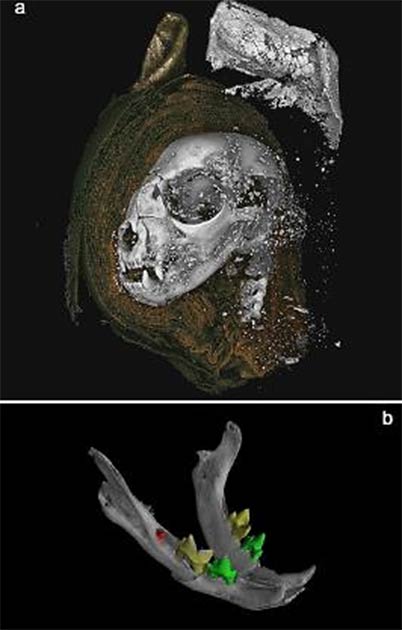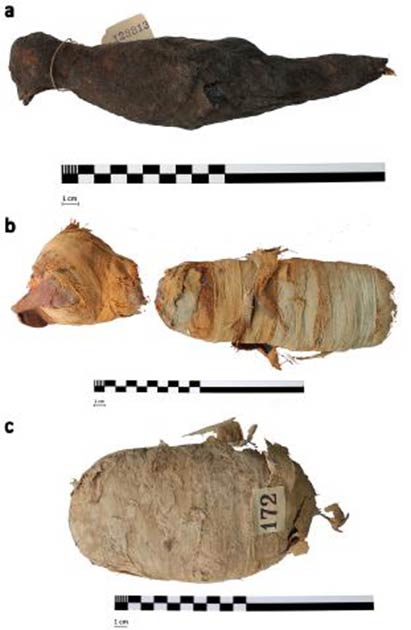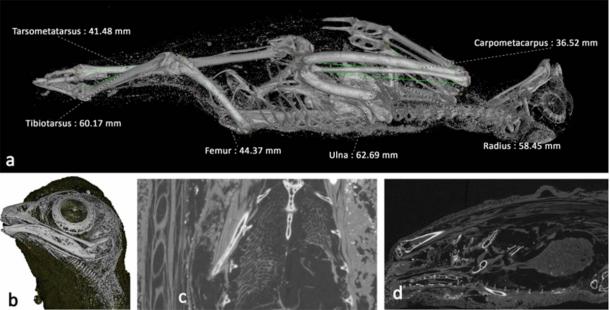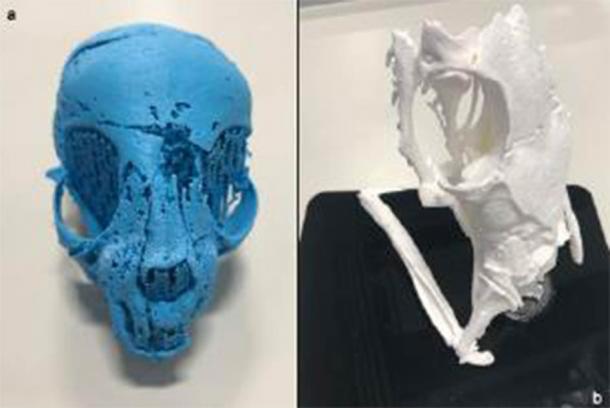
Scans Reveal Cruelty Behind Ancient Egyptian Animal Mummies
Ancient Egypt is famous for its mummies of pharaohs, however, the ancient Egyptians mummified animals as well as people. In 2020, new non-invasive technology was used to digitally unwrap three animal mummies in Britain. This provided new insights into the dark secrets of the ancient Egyptian practice of animal mummification.
The three animal mummies that were the subject of the research are held in the Egypt Centre's collection at Swansea University, in Britain. The research project was an interdisciplinary one and it involved researchers from the university’s engineering and Egypt Centre. Professor Richard Johnston, of the Engineering Department, told the BBC that “The project started purely because the engineering department used to be right opposite the Egypt Centre, and over coffee, I mentioned our X-ray scanner might reveal what's hidden inside their animal mummies, and so we took it from there.”
A Micro-CT scanner was used, as it is much more powerful than a CT scanner, and this allowed the team to see what was inside the mummified animals without removing their bandages.

3D renderings from micro CT data. A) mummified cat head rendered from tomography data. A digital dissection, removing wrappings on left side of the head, revealing bone, and higher attenuating material used to stiffen the external wrapping of the ears. B) Cat head mandible, with segmented teeth, revealing unerupted mandibular first molars. (Nature)
Animal Mummification in Ancient Egypt
Animals were mummified and buried in ancient Egypt for many reasons: they were votive offerings, sacred animals, or beloved pets buried with their owners. There was a whole industry dedicated to the mummification of creatures. As the researchers wrote in the journal Nature, ‘Dedicated keepers were employed to breed the animals, while other animals were imported or gathered from the wild to satisfy the demand for embalmed animals.’ Priests often mummified various creatures by removing their entrails and treating their remains with chemicals.
Since the 19th century, many of those cadavers have been investigated, but they have been difficult to examine without destroying the specimens. The Micro-CT scanner allowed the researchers to capture images of the animals in a non-invasive way. In Nature, the researchers wrote that the scanners revealed ‘skeletal structures, mummification materials, and even desiccated soft tissues.’

Photographs of all three animal mummies: a) bird mummy, b) cat mummy (head and body), and c) mummified snake. (Nature)
Animal Mummy Mysteries Revealed
The three mummies turned out to be a cat, a snake, and a bird, and they are at least 2000 years old. ‘The bird is most likely a Eurasian kestrel, with a damaged beak and left leg, the researchers report’, according to Science. The imaging revealed that it was wrapped and coated in a resin-like material. In Nature, the study’s authors wrote that ‘It is believed to be votive, consistent with other studies of similar bird mummies.’ Most likely the kestrel was caught in the wild.

Scans of the mummified bird, most likely a wild kestrel. (Nature)
The snake is a cobra, and it was probably killed by the snapping of its spine. According to Science, it was killed “during a ‘whipping’ procedure, in which the animals were held by the tail while their heads were beaten against the ground.” It was in a poor condition when it died and it had been de-fanged, possibly to protect the embalmers from its venom. There was resin in the cobra’s mouth and according to Science, ‘this formed part of the “opening of the mouth” procedure.’ This was common practice so that the creature could breathe, eat, and even speak in the Egyptian afterlife.
Scans revealed that the other animal mummy was a cat. The ‘cat, as scans revealed, was most likely a domesticated kitten (Felis catus) - less than five months old when it died,’ reports Science Alert. Domesticated cats played an important part in Egyptian social and religious life and several deities are depicted with the head of these animals.
- Mummifying Millions: The Canine Catacombs and the Animal Cult Industry of Ancient Egypt
- 70 Million Mummified Animals in Egypt Reveal Dark Secret of Ancient Mummy Industry

3D-prints from segmented X-ray micro tomography data of the mummified cat. (Nature)
The animal had a broken neck, and this was a common method of killing cats, which were often mummified. However, the vertebrae may have been broken as the embalmers were trying to keep the cat’s head upright. The animal was likely bred to be embalmed and the researchers wrote in Nature that ‘its head was decorated with a death mask’. It was likely a votive offering to a deity.
Human-Animal Relationships in Ancient Egypt
Egyptologist Carolyn Graves-Brown, one of the study’s lead authors, stated to the Daily Mail “Our findings have uncovered new insights into animal mummification, religion and human-animal relationships in ancient Egypt.” There are believed to be tens of millions of mummified animals buried across Egypt. Professor Johnson told the Daily Mail that “The work could provide a template for future investigations.”
The imaging technology revealed much more about animal mummies than previous studies. They showed that these animals were cruelly killed and treated badly before they died. Future studies of commonly embalmed creatures such as dogs and ibises may reveal even more about the beliefs and practice of the ancient Egyptians and their relationships with animals.
Top Image: One of the ancient Egyptian animal mummies (Andrea Izzotti /Adobe Stock) scanned in the study was a cat. (Nature)
By Ed Whelan
















Comments
For years it’s said the Egyptians worshiped & revered cats. The evidence noted in this article apparently showed that this reverence occured in the upper-classes in Egyptian society. A working-class mummifier would dispassionately snap the neck of a small kitten so an upper-class Egyptian could cuddle it in the afterlife. And considering the large number of mummified animals which were entombed it’s safe to assume that there was a cottage industry to supply the Well-To-Do with ‘companions’ in the afterlife. It’s hard to feel reverence for something that you continualy butcher & stuff for someone who wouldn’t consider you an equal. The snapping of some animals neck is cruel but it can also express one’s opinion of the person your doing this for.